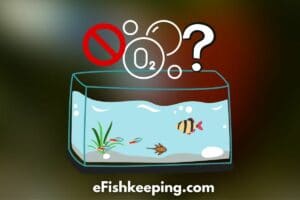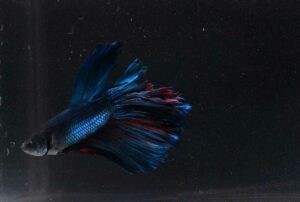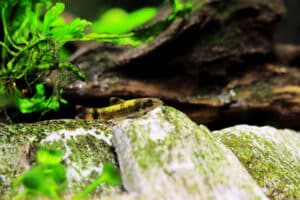If you’re looking to create a community tank, you have to ensure all the species living together will be happy, peaceful, and healthy.
Meeting all the requirements of the fish and mimicking the native habitats of the fish is crucial. And when it comes to housing fish together, one of the best and the easiest combination is keeping Guppies and Neon Tetras.
| Fish: | Typical Size: | Space Needed: |
| Guppy | 2 inches | 2 Gallons Per Guppy |
| Neon Tetra | 1.5 inches | 1.5 Gallons Per Neon Tetra |
Here’s How Many Guppies And Neon Tetras You Can Keep Together:
In total, nine guppies and neon tetras should be kept together in a 15-gallon tank. Both guppies and neon tetras are schooling fish; hence guppies should be kept in a group of at least three, while neon tetras should be in a group of six.
| Tank Size: | Guppies: | Neon Tetras: |
| 5 Gallons | 1 | 3 |
| 10 Gallons | 3 | 2 |
| 15 Gallons | 3 | 6 |
| 20 Gallons | 3 | 9 |
| 30 Gallons | 6 | 12 |
| 55 Gallons | 12 | 20 |
How Many Guppies And Neon Tetras In A 5 Gallon Tank?
For both Guppies and Neon Tetras, plan on having two gallons of space for each guppy, but only one and a half gallon for each neon tetra. So, if you’re going to use a five-gallon tank, then you can only have 1 guppy with three neon tetras or two guppies with one neon tetras at the most.
Since both guppies and neon tetras need to be in groups, a 5 gallon tank will be small to house them.
How Many Guppies And Neon Tetras In A 10 Gallon Tank?
In a 10 gallon tank, you can have 3 guppies with 2 neon tetras, or 2 guppies with 4 neon tetras.
Usually, it’s essential to keep guppies in a trio where there are two females present for each male (following the 2:1 ratio of females to males).
Guppies are known to chase the females in the tank, so having more females guppies for each male guppy helps in dealing with the issue and resulting in a more peaceful tank environment.
Further Read: How Many Fish Can You Add At A Time?
How Many Guppies And Neon Tetras In A 15 Gallon Tank?
A 15-gallon tank is the best sized tank to keep guppies and neon tetras together along with ensuring that each fish has enough space to live in the tank ecosystem. You can house a trio of guppies and 6 neon tetras together in the 15-gallon tank.
How Many Guppies And Neon Tetras In A 20 Gallon Tank?
To ensure your Guppies and Neon Tetras are continually happy, a 20-gallon tank is also a good idea. You can house 3 guppies and 9 neon tetras in a 20 gallon tank.
Keeping the guppies and neon tetras in big space will allow them to have plenty of room to swim about. This way, you can have all the plants and decorations they need so they can hide, rest and explore.
Please note that the above guidelines of number of fish to keep together is only for giving you a rough idea. The exact number of guppies or neon tetra you can house per gallon can vary based on other factors like how your tank is setup.
For instance, if you have a heavily planted tank with well-equipped filters, and you do regular water changes, you can house a few guppies and neon tetras more than the general recommended levels.
This is because your tank ecosystem would be efficient in such a case would be efficient enough to deal with the extra waste and resource consumption due to extra fish.
But on the other hand, if you don’t maintain your tank regularly or don’t prefer doing frequent water changes, you’d have to suffice with lesser number of fish in the tank compared to the recommended levels.
So take this numbers as a rough guideline and choose the right numbers based on the specific conditions of your tank and depending on your requirements.
Can Guppies And Neon Tetras Live Together?
Since Neon Tetras and Guppies share a similar temperament and preference for water conditions, they can live together quite happily. The both love a peaceful existence with the same pH balance and temperature range. But, there are a few things you have to take into consideration before you do.
You will have to pair up the specific varieties of each type of breed, so you ensure aquatic bliss while also being able to provide what they both require. This includes understanding the habits and activity of each fish, along with simulating their native environments.
What’s great is that both fish come from the Amazon River in South America. So, it will be a good idea to study that area of the world and what the general conditions are in the river and in the surrounding environment.
Water Conditions
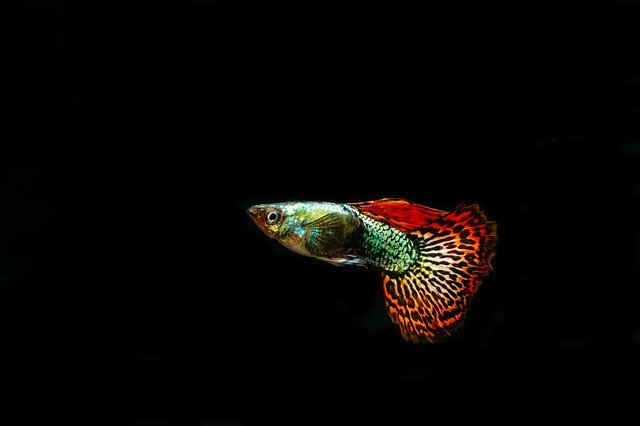
Guppies love a tank that sits at a temperature range between 64°F to 82°F and a pH balance of 6.0 to 8.0. Neon Tetras like the temperature to be in the ballpark of 72°F to 75°F and a pH of 6.0 to 7.0.
Therefore, you should plan on an average tank temperature of 73°F and a 7.0 pH level.
Read: Is 7.8 pH Too High For Fish Tanks?
Lighting
Both Guppies and Neon Tetras require obscured lighting conditions. They don’t need things too bright, but they do need some sort of light exposure for at least eight to 10 hours each day. The fish will also help themselves by hanging out from the middle section of the tank to the bottom.
Plants; Decor
Because the Amazon is dense with jungle vegetation and tons of aquatic plants, you want to mimic this for both Guppies and Neon Tetras.
Both of these fish like to hide and tuck themselves away among brush and foliage. Floating plants will help darken any light that’s too bright as well.
Read: Do Guppies Like Caves?
Substrate
A dark substrate is ideal for both Guppies and Neon Tetras. Not only will this help create low-lighting conditions, but it will simulate what you would find on the bottom of the Amazon River and its tributaries.
Plus, it will provide a stunning contrast between the plants, lighting, and fish.
Diet; Food
Since both Guppies and Neon Tetras are omnivores, they can each enjoy a variety of foods that include live prey and blanched veggies.
What’s fantastic about both of these fish is that they aren’t picky eaters and will consume just about anything you offer to them.
They should mainly eat things like small crustaceans, insects, worms, and fish flakes, along with frozen and freeze-dried food. But you should also give them high-protein offerings like bloodworms and brine shrimp, as well as peas, lettuce, and cucumbers.
Both fish require meals twice per day, and you should only give what they can eat in a matter of a few seconds. This will help control spikes in water parameters.
You May Also Like To Know: How Long Can Guppies Go Without Food?
Temperaments
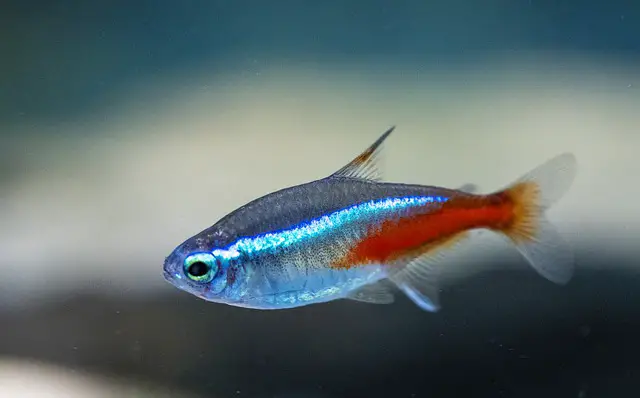
Both Neon Tetras and Guppies are very peaceful fish, and it’s not often they’re aggressive, especially when kept with other peaceful species. They’re active swimmers, though, and require enough space. If they feel cramped in the tank, they can be combative with other tank mates.
The only aggression you will see is when the males chase the females around during the mating time. However, if you notice either Guppies or Neon Tetras hiding far too often, it means they’re experiencing stress, or they’re sick.
Regardless, both fish breeds love to school with others of their own kind and require friends to be happy. Therefore, it’s not a good idea to have either as individuals. You want at least two of each, but more is better. In fact, six are advisable. That means you should have 12 total fish between both Guppies and Neon Tetras.
Breeding
The only problem in housing Neon Tetras with Guppies is that the Tetras will attempt to eat the fry of Guppies. The only way to control this is to have a nursery tank for the expectant Guppies. Also, both breeds can get a little cranky and aggressive when mating season comes around.
Males tend to be aggressive when chasing down females. Females will be aggressive when they’re caring for their fry. So, you will have to play referee in many instances without upsetting the fish.
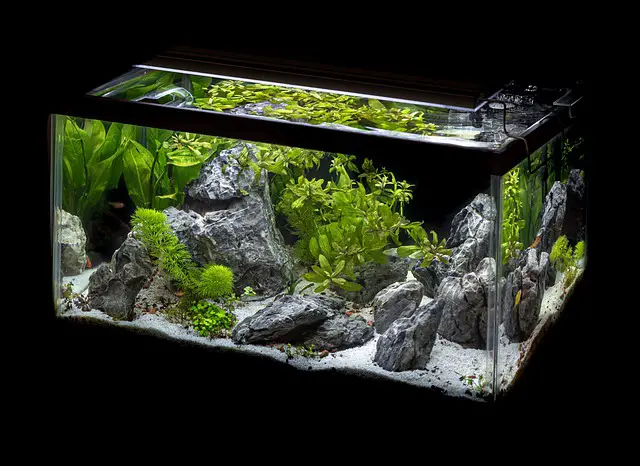
Final Thoughts
Neon Tetras and Guppies are some of the easiest fish to house together. They are peaceful and share the same diet since both come from the Amazon. This translates to water conditions that include lighting, pH, and substrate. But, avoid overcrowding your tank to ensure they stay happy and healthy.
Suggested Articles:
Hi! I’m Praveen Ghoshal, the founder of eFishkeeping.com. Inspired by my Dad, I got interested in fishkeeping when I was a kid. Since then, I have been involved with this hobby. Currently, I have 3 fish tanks at our home, and I enjoy this hobby with my full family. Read more about me here.

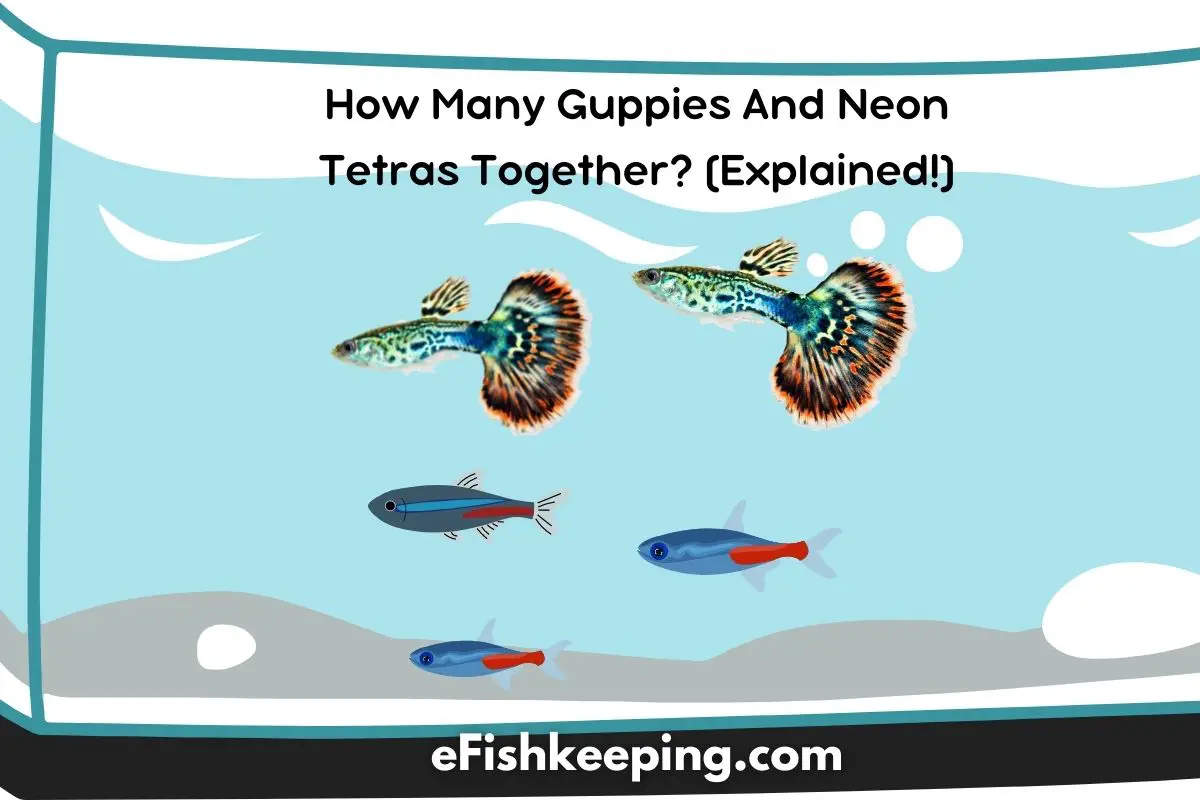


![Do Neon Tetras Die Easily? [Here’s The Truth!] do-neon-tetras-die-easily](https://efishkeeping.com/wp-content/uploads/2023/03/do-neon-tetras-die-easily-300x200.jpg)
